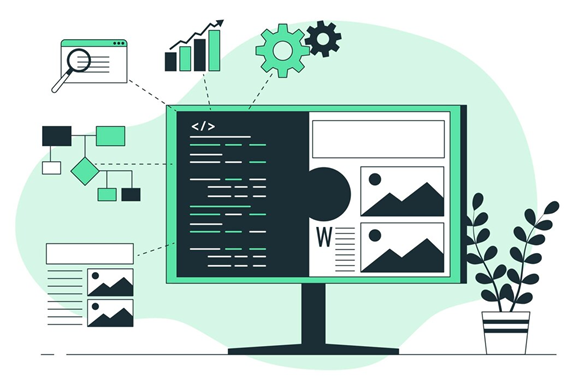To guarantee high software quality, it is not enough to develop a product and test it. To make sure that it is reliable, relevant, and convenient to use, it is also necessary to determine its purpose, quality indicators, testing methods, etc. In other words, it is necessary to ensure professional software quality management. Why it is important and how it is done step by step you can learn from this article.
Definition and Types of Software Quality Management
Software quality management is a complex concept. It implies monitoring the process of development and maintenance of programs and applications throughout their life cycle. Its main goal is to make sure that the software is easy to navigate and use and meets its purpose and has a high level of user satisfaction.
However, business owners often forget about this most important requirement, or try to figure it out on their own. Well, it is faster, more economical and much more fruitful if everyone does their own thing. Only an experienced software QA consultant can help in organizing the management process successfully.
In general, there are 3 main types of software quality management:
1. Quality assurance. It is a continuous software quality management system designed to ensure that the program meets the project’s requirements and user needs.
2. Quality planning. Planning covers delivery tasks and achieving goals, reviewing possible risks, and predicting future program updates.
3. Quality control. As well as quality assurance, control aims to make sure that the program works correctly and meets the set requirements.
Although there are similar concepts, the main difference between QA and QC is that QA is a more extensive concept that aims to improve the entire development process, while QC is designed to check its final results.
Best Practices for Successful Software Quality Management Engagement
Implementing software quality management requires some knowledge and tips. To be successful in program development, you need to do more than control each step. This is how you should act so that quality management brings good results.
Define Project Quality Indicators
You should think about the criteria by which you will evaluate how well your product meets the system and user requirements. Their list may include convenience, speed, level of security, and performance.
Develop a Quality Assurance and Control Plan
It should be long-lasting and relevant to the entire life cycle of the product. You should anticipate all methods of control and planning at the initial stage. It will help in the future organization of work processes.
Involve Different Testing Approaches and Methods
To test the software comprehensively, you should consider the possibility of not only manual but also automated testing. It can significantly speed up product release time and reduce the number of defects. Also consider various types of testing, such as productivity, compatibility, security, and others.
Check the Process Regularly
To make sure that quality management is following the plan, it is necessary to constantly monitor all areas of software development company. Regular auditing is the best way to reduce any risks or bugs.
Analyze Intermediate Results
Analysis of key intermediate results is very important because it helps to find out how successful quality management is in time. If any area fails, fixing the problem early will save time and money.
Main Advantages of Professional Software Quality Management
The coordinated work of all teams during software development is the key to its future success. However, it is not the only task assigned to software quality management. Its goal is to ensure that the program will be in demand among users, will work properly, and can be updated following new user requirements quickly.
High-quality management can guarantee:
- Productive work of all team members. With proper planning, everyone will know their tasks, goals, and expected results.
- Product quality improvement. Since the management is called to control the entire process of development and testing, the program quality is expected to become higher.
- Attracting new and new customers. If the application or program is competitive, the number of users will steadily grow.
- Reduction of software defects. Most of the bugs will be discovered in the early stages, so their appearance after the product release will be minimal.
- Almost no risks. If the goals and requirements for software development are set in time and correctly, the risk of it failing is almost non-existent.
Software quality management is an integral element of product development. If you are looking for options to attract it, TestFort can be the solution. The company guarantees high-quality services for monitoring the development process of any software.






Leave A Comment
You must be logged in to post a comment.